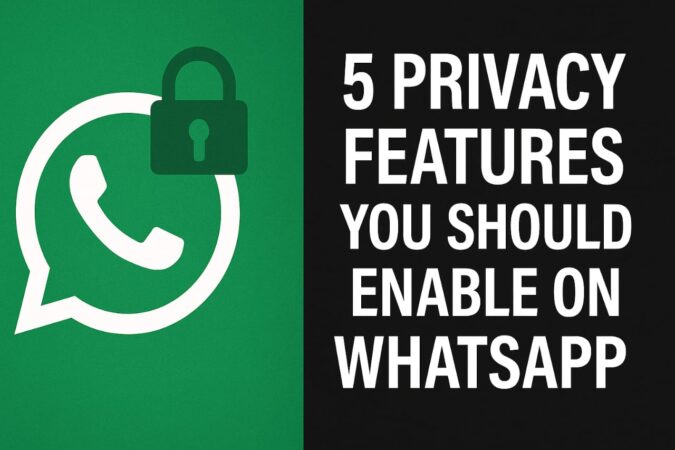Privacy has never been more crucial in this digital age. As one of the world’s most popular messaging apps, WhatsApp has made several moves to protect user privacy. Although many of these features are accessible to all users, not everyone utilizes them to their fullest potential. To keep your chats, personal data, and internet activity safe, here are five must-configure privacy settings that you should enable on WhatsApp today.
1. Activate Two-Step Verification
Two-step verification introduces an added level of security on your WhatsApp account. If it is activated, it asks for a six-digit PIN while signing up for WhatsApp again with your phone number. This way, even if another person acquires your SIM or phone, he/she won’t be able to view your conversations without the PIN.
How to activate it:
Go to Settings > Account > Two-step verification > Enable. You’ll be asked to create a PIN and optionally add an email address for recovery.
Why it matters:
This feature protects your account from unauthorized access and SIM-swap attacks.
2. Control Who Can See Your Personal Info
WhatsApp lets you manage who sees your profile photo, last seen, whether you’re online, and about section. As a default, it can be visible to all, including non-contacts.
How to change visibility:
Navigate to Settings > Privacy, and under items such as Last Seen & Online, Profile Photo, and About, you can select either “Everyone,” “My Contacts,” “My Contacts Except…,” or “Nobody.”
Why it matters:
Restricting this data prevents your privacy from being invaded by strangers or unwanted contacts who might abuse your information or track your online behavior.
3. Enable Disappearing Messages
Disappearing Messages is an excellent feature if you wish for your messages to delete themselves after a specified time. This can be useful for maintaining your chats clean and preventing sensitive conversations from lingering longer than they should.
How to use it:
Open a conversation, click on the person’s name or group name, and click on Disappearing Messages. You can have messages disappear after 24 hours, 7 days, or 90 days.
Why it matters:
It makes it less likely for your personal messages to be kept or screenshotted months or years after a chat.
4. Turn on View Once for Photos and Videos
Occasionally, you wish to send a photo or video that is meant to be seen once only—such as a password, ID picture, or private matter. WhatsApp’s “View Once” feature allows you to do just that.
How to send View Once media:
Tap the [1] icon beside the send button while sending a photo or video. The recipient will get to see it only once and won’t be able to open it again.
Why it matters:
This feature stops media from saving or being watched repeatedly, allowing you to control what you post.
5. Lock WhatsApp using Fingerprint or Face ID
For stopping unauthorized access to your conversations even if the other person has physical access to your phone, you can allow biometric authorization. With this, WhatsApp asks for your fingerprint or face ID each time you use the app.
How to allow it:
Navigate to Settings > Privacy > Screen Lock, and switch on Unlock with Fingerprint (or Face ID on iPhones).
Why it matters:
This makes sure that even if someone else picks up your phone, they can’t spy on your WhatsApp conversations.
Final Thoughts
Spending a few minutes configuring your WhatsApp privacy settings can make a big difference to the safety of your private conversations and data. With identity theft, social engineering, and cyber stalking on the rise, it’s well worth utilizing these inbuilt features. Be smart, stay safe, and put privacy first in your online life.

